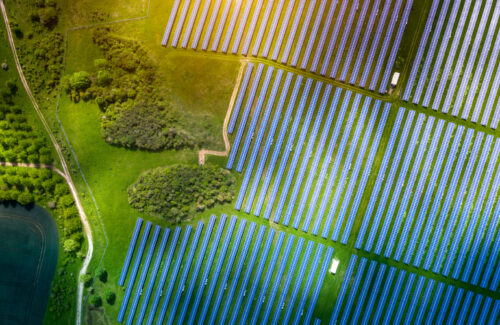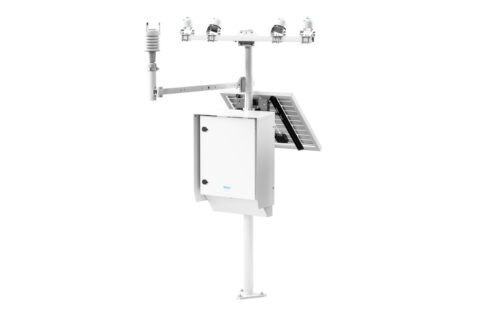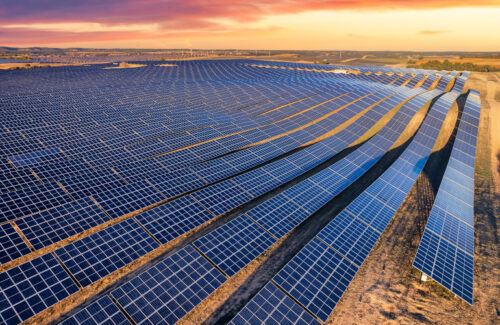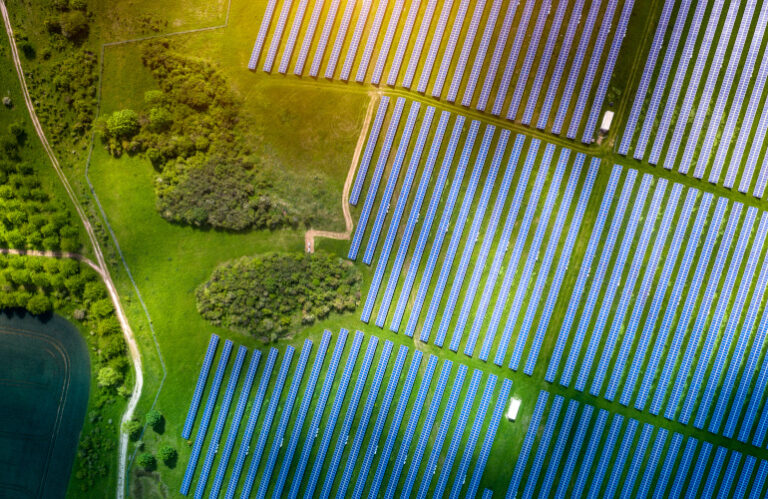The solar industry in the United States is booming, thanks to the U.S. Energy Information Administration project that the percentage of added electrical capacity from solar energy will grow to 71% in 2025 (51 GWAC). However, before any new solar power plant is built, the site’s resources must be thoroughly assessed for feasibility, financeability and operational excellence.
The performance of solar power plants depends not only on sunshine, but also on accurate weather data, as weather conditions directly affect the performance of PV panels. With a thorough analysis of solar energy sources and weather, solar developers and owners can maximize their investments.
The importance of solar resource assessment
 By collecting and analyzing solar radiation and weather data, solar resource assessments determine the amount of solar energy available at a given location and the location’s potential for generating electricity.
By collecting and analyzing solar radiation and weather data, solar resource assessments determine the amount of solar energy available at a given location and the location’s potential for generating electricity.
With accurate data on solar radiation components, albedo, temperature, pollution, humidity, wind speed and rainfall, project owners and operators can simulate the project and derive energy yield estimates for informed decision making.
The amount of sunlight that the solar panels receive – diffuse or direct – is the most important factor that determines the energy generated. According to the National Renewable Energy Laboratory (NREL), higher albedo values increase annual PV energy by as much as 8%, and panels cleaned once or twice a year produce 3.5% and 5.1% more electricity than uncleaned panels. Yet the efficiency of solar panels decreases as temperatures rise. Developers must also consider the wind speed damage threshold to avoid damage, while recognizing that wind cools the panels, increasing efficiency, and that rainfall data helps estimate the cleanliness of the modules.
Assessing solar resources plays a crucial role in selecting suitable locations, choosing technical equipment, sizing systems and optimizing yields. Therefore, accurate solar radiation and weather data are essential for several reasons:
- Financial planning and investing: Investors and lenders need reliable estimates of a project’s energy output and economic return to make informed financing decisions. Inaccurate solar resource data can lead to overestimated or underestimated forecasts, jeopardizing the bankability of the project.
- System size and configuration: Solar resource rating data is used to optimize solar power plant design, including equipment selection, panel layout, and system component dimensions. Incorrect data can lead to suboptimal system designs and reduced energy production.
- Risk mitigation: Understanding the variability of solar energy sources and potential uncertainties (such as weather patterns) enables better risk management, helps identify potential challenges and develop contingency plans to reduce financial risks and increase project resilience.
- Performance optimization: During the operational phase, solar radiation and weather data are crucial for monitoring the performance of the solar power plant and identifying any deviations from the expected energy yield. Accurate data enables timely corrective action and maximizes plant operational efficiency.
Inaccurate solar data impacts stakeholders at every stage of the project lifecycle. For developers, a low-quality rating will affect long-term performance, and thus the P50 and P90 estimates, potentially making the financial indicators less attractive. For the EPC, inaccurate solar data can reduce PR, potentially leading to liquid damage, lengthy performance discussions and even payment delays. For the O&M, inaccurate solar data can lead to unnecessary on-site interventions. with each visit costing approximately $1,000. For asset owners, an incorrect PR can make asset deterioration undetectable, which – in a sample case of as little as 2% at a 5 MW plant over five years – resulted in a loss of revenue of more than $70,000.
Understanding different data collection methods is important given the challenges surrounding radiation measurements – shading, tilt, orientation and environmental effects – and sensor and system-related monitoring challenges such as communication loss, power loss and calibration.
Collection of solar radiation and weather data
 Two primary methods for collecting solar radiation and weather data are on-site measurements and satellite-based models.
Two primary methods for collecting solar radiation and weather data are on-site measurements and satellite-based models.
- Sensor measurements on location: On-site measurements include the installation of ground sensors and weather stations at the proposed site. These sensors measure various parameters including global horizontal irradiance (GHI), direct normal irradiance (DNI), diffuse horizontal irradiance (DHI), air temperature, wind speed and other relevant meteorological data.
- Satellite-based and reanalysis models: Using remote sensing data from Earth observation satellites and reanalysis of weather conditions, these models estimate solar radiation and weather conditions at virtually any location on Earth. Satellite information relies on algorithms that combine satellite images with meteorological data and other inputs to generate solar resource estimates.
On-site sensors provide highly accurate and detailed data, essential for accurate energy yield predictions and performance monitoring. Often referred to as ‘the ground truth’, these measurements also take into account local topography, terrain and microclimatic conditions and can be used to verify and calibrate satellite-based models.
On the other hand, satellite-based models provide global coverage, making the data suitable for assessing solar energy resources, and generally represent a more cost-effective approach. By providing estimates of solar energy resources for periods spanning decades, satellite data enable the analysis of long-term climate trends.
With a clear understanding of the importance of collecting accurate data on solar energy resources and its uncertainty, following the optimal assessment strategies can help maximize the return on investment in solar energy projects, or ROI.
Best practices for solar resource assessment
 To obtain the most accurate ground measurement data with the lowest uncertainty, the following best practices are recommended:
To obtain the most accurate ground measurement data with the lowest uncertainty, the following best practices are recommended:
- Select locations with unobstructed access to sunlight, minimal shade and suitable space for solar panel installation. Consider factors such as orientation, tilt angle and local weather patterns.
- Check the leveling and alignment of high-end weather observation systems, such as Vaisala’s AWS810 Solar edition weather station – regularly cleans the optics of the instrument depending on site conditions, dust, snow, birds and instrument type. Recalibrate the sensors if necessary.
- Combine at least one year of on-site measurements and satellite data for the most comprehensive and accurate solar resource data. On-site measurements can validate and calibrate satellite data, while satellite data can fill gaps and provide long-term historical context.
- Follow industry standards and guidelines, such as those of the World Meteorological Organization CIMO guidethe American NREL Best practice manual for the collection and use of data on solar energy sources for solar energy applications and that of the International Electrotechnical Commission IEC 61724-1:2021 standardfor sensor selection, installation, maintenance and data quality control.
- Leverage advanced analytics tools and platforms that integrate various data sources, perform data quality checks and provide detailed energy yield forecasts and performance analytics, identifying potential problems and recommending corrective actions.
- Document everything — system design, on-site installation, all preventive and corrective maintenance actions, quality control of observation data, etc. — to maintain quality control.
Combining satellite data with on-site observation data, modeled by advanced global services such as Vaisala Xweather, improves the accuracy and spatial and temporal resolution of solar energy resource assessments, reducing resource uncertainty. In fact, the GHI, DNI, and DHI rates all decreased by 1.81, 3.21, and 4.85, respectively, over a 24-month observation period.
Evolution of the solar industry
Determining the feasibility of a solar energy project requires extensive consideration, including site selection, system sizing and configuration, energy yield optimization, financial planning and investments, risk mitigation and grid integration. Critical factors such as location, climate, topography and shading must be analyzed throughout the project’s life cycle to make informed decisions about its design, financing and operation.
As the solar industry continues to grow, accurate assessment of solar energy resources will remain critical to de-risking investments, ensuring project bankability and optimizing energy yields – paving the way for profitable and high-performing solar assets.
By combining on-site measurements with satellite-based models, adhering to industry standards, applying advanced analytics, and continuously monitoring and optimizing the system, solar developers and asset owners can maximize their ROI and contribute to a sustainable energy future .
 Dr. Rémy Parmentier is head of Solar and Hybrid at Vaisala Renewable Energy, where he leads Vaisala’s solar energy offering and development business strategy. After joining Vaisala Leosphere in 2006, he led the WindCube lidar R&D team for more than a decade, actively demonstrating the benefits of lidar technology worldwide. Dr. Parmentier received a PhD in physics from the University of Aix-Marseille in France.
Dr. Rémy Parmentier is head of Solar and Hybrid at Vaisala Renewable Energy, where he leads Vaisala’s solar energy offering and development business strategy. After joining Vaisala Leosphere in 2006, he led the WindCube lidar R&D team for more than a decade, actively demonstrating the benefits of lidar technology worldwide. Dr. Parmentier received a PhD in physics from the University of Aix-Marseille in France.


